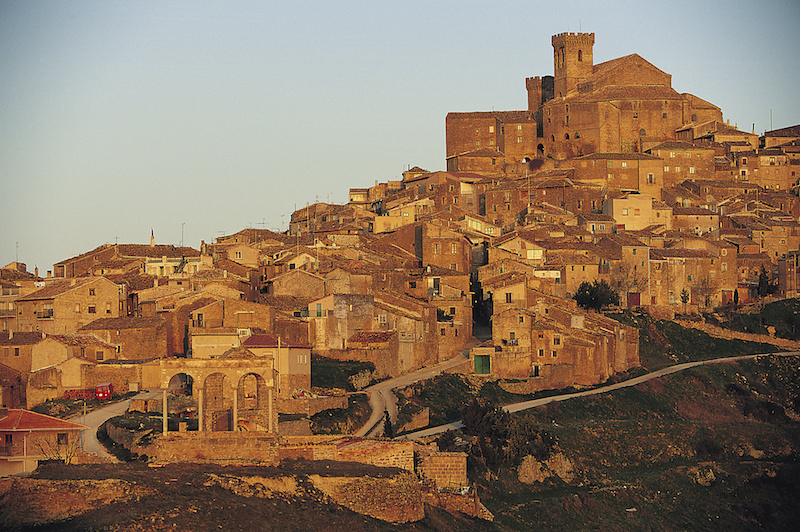
When considering future inspection practices, regulators should heed lessons from history.
In today’s increasingly complex and constraining institutional and fiscal environments, the regulatory state seems to be under mounting pressure to accommodate new techniques, types of analysis, and technologies. But even in accommodating innovations in new technologies or institutional arrangements, most predictions about the future of regulation are fundamentally familiar: They envision incremental changes, such as specialization within fields or the delegation of existing tasks. Accordingly, one of regulation’s most recognizable—if uncelebrated—features will almost certainly take a preeminent role in the administration of the future: the practice of inspection.
We should be careful in assuming, though, that future inspection practices will be so familiar. On the contrary, the role of inspections within the history of bureaucratization and regulation suggests that even in relatively stable legal or institutional environments, systemic changes in the form and function of inspections are the rule, and predictable regulatory regimes are the exception.
Although inspections are a remarkably recent development in the United States, they have a history that long predates the expansive regulatory state within which they now exist and the often-technical function they serve. Modern regulatory inspections appeared in the nineteenth century, but the earliest “inspections” emerged thousands of years ago, principally to maintain the control and authority of imperial centers over the periphery. For example, the Chinese censorate—an inspector that was eventually used to consolidate central authority, combat corruption, and maintain Confucian values—first appeared during the Qin dynasty and was the earliest, most persistent, and most expansive version of early inspection. In the West, the reign of Roman Emperor Trajan saw the first appointments of correctores to reform the local administration of the Roman Empire, whereas Charlemagne and his successors briefly relied on missi dominici, “envoys of the lord,” to carry out the practice of justice and ensure the loyalty of the nobles outside their courts.
The first global golden age of inspection, however, began in the 15th century and continued through the 17th century, energized by the consolidation of power in early modern states in Europe and Asia. In China, the Ming dynasty reinvigorated the traditional censorate. The Joseon dynasty in Korea adopted a parallel and perhaps even more potent censorate.
In Europe, new practices of inspection drew from a mix of medieval institutions, feudal obligations, and the revitalized study of law. In France, for example, the short-lived practice that most closely resembled an inspection was entrusted to legal functionaries called maîtres des requêtes and bore the name chevauchée, literally a “horse ride,” an unrelated medieval practice to which the maîtres des requêtes’ functions of collecting complaints and lawsuits were added.
The broadest of these new types of early modern inspections—and one which began to intimate both something akin to regulation and efforts to combat regulatory capture—had an even more inconspicuous name, the Spanish visita.
Although the visita, along with all pre-19th century practices of inspection, belonged to a distinctive legal, institutional, and social milieu, it is a model of how and why the behavior of institutions can change quite dramatically even within a generally stable—perhaps one more so than the present—legal and administrative environment.
What was the visita? At its apex in the late 16th and early 17th century, the institution and practice of the visita actually described a number of types of inspection. The most routine visitas had a vast range of functions, including financial audits, reviews of jails, hospitals, universities, factories, mines, archives, and the postal service, examinations of the treatment of indigenous laborers, inspections of merchants’ ships, and monitoring the collection or distribution of resources like salt, wood, and water. The more famous and prestigious visitas, however, were functionally similar to the work of inspectors general. They reviewed and prosecuted royal officials throughout the Spanish empire.
In the early 16th century, however, the visita and other ad hoc inspections had one principal aim: the collection of information. In response to the dramatic expansion of the Spanish Crown during Emperor Charles V’s reign, elites in the court and the Emperor himself typically employed inspections as a means of collecting records and reports. These records and reports might, for example, guide financial and taxation policies, provide for improvements to practices (like ensuring the copying of sentences resulting from civil and criminal suits), or streamline the structure and composition of financial and legal courts.
This information gathering was, curiously, probably the most persistent feature of the visitas. It characterized what is probably the best known of all the visitas, José de Gálvez’s tour of the Americas in the 1760s that resulted in the deeply transformative Bourbon reforms. But the visita could also occur at a smaller scale, as it did when an inspector of a university in the mid-17th century observed the unwarranted and rampant proliferation of degrees caused by vote packing and intimidation through threats with weapons. The inspector suggested modifications to the university’s voting practice and issued a warning about the presence of weapons. In effect, the inspection was a cybernetic system, in which regulations were reviewed as part of the process of inspections of institutions or officials.
At the same time, the visita was directed to a complementary albeit distinct end: the discipline of malfeasant officials. This use of the visita, too, was initially directed by the Crown, though hardly without controversy since it was continuously attacked for being too expensive and time consuming and for being damaging to the independence, effectiveness, and personal reputation of local administrators.
Nevertheless, by the late 16th century, disciplinary enforcement had unexpectedly become the visita’s primary function. Indeed, in the process of this transformation, the visita had subsumed the production of reforms within its disciplinary mechanism.
Why did this shift occur? In the late 1550s, despite support from the Crown for its disciplinary use, the visita often proved incapable of arriving at any kind of conclusion except in relatively easily demonstrated cases of financial crimes. The visita’s use in this financial area happened in part because the public—unfamiliar with visita practice—was reluctant to provide reports for which they themselves might suffer consequences and in part because many forms of corruption or capture were not normalized as being immoral or illegal.
What truly shaped the visita was less the support of the Crown than the growing participation of the public in its investigations over several iterations of inspection. Public participation turned the visita’s attentions to behavior that was previously invisible—or implicitly acceptable—to the state.
For example, early records suggest that prosecutions in Italy—which was part of the Spanish Empire at the time—before and during the 1550s were mostly related to crimes like embezzlement, a charge relatively easily demonstrated by the records that were maintained or by those records’ absence. By the 1580s and 1600s, however, the range of behaviors that could be monitored and prosecuted became considerably broader as new groups of individuals affected by the local state provided depositions. For example, merchants began to provide information about certain councilors who were responsible for regulating banking. Councilors had started to use their broader authority to inhibit individuals from making withdrawals during a banking crisis while simultaneously maintaining extensive private financial relationships with those same banks. Likewise, merchants in the shipping industry provided information on port officials who had abused a plague scare to confiscate and steal valuable cargo, which was then distributed to those officials’ patrons. Other populations that were previously unlikely to participate in the legal process—including women, servants, slaves, and residents of the countryside—also supplied information about various problems they encountered. They reported on the excessive slaughtering of cattle, the damage done by sheep to farms, the violence committed by soldiers, and the various frauds and extortions that were an endemic feature of early modern administration.
These new fonts of information resulted in a dramatic growth in the potential for oversight even if the visita by no means eliminated malfeasance. In Naples, for example, between the visita that began in 1559 and the visita that began in 1628, the number of officials who were prosecuted in any given visita more than doubled. Prosecution rates in some areas also increased, perhaps by as much as fifty percent. This discipline fed back directly into the process of reforming the administrative state, where new rules limited the power of local officials. For example, the quintessentially Neapolitan custom of receiving donatives—especially cheeses and poultry—at Christmas from personal clients was very quickly forbidden and thereafter easily monitored and punished.
Then, after roughly a century and a half of growing scrutiny, expanding participation in the practice of inspection, and new norms of bureaucratic conduct that created a more expansive collection of behavior considered to be “corrupt,” the visita effectively vanished as a regular tool of Spanish administration. The logic of the Spanish state had changed and old forms that merged administration and oversight faded in favor of French models. It was not an inevitable change, nor did it happen suddenly—visitas were used for another century—but the curious dynamic of social participation overseeing and providing feedback to the emergent administrative state had diminished in importance.
In its disappearance, the visita is hardly alone. The historical trend seems to suggest that the framework for inspections—especially of government agencies—lasts for about two centuries at most, in large part because they require considerable resources and seldom receive abundant political support. Whether the technical and fiscal challenges on the horizon will demand substantial changes to today’s regulatory state remains to be seen. But the social practices and cultural understandings upon which regulations and their enforcement are essentially founded are often lost when asking how administrative law or institutions will adjust to the future. Perhaps one day we will turn to social media as a means of soliciting information, for instance.
Instead of merely looking to technical analysis or providing channels for expert feedback, investigating the ways these less apparent features of the administrative state continue to influence regulation can offer regulatory regimes mechanisms to serve new populations and address unanticipated issues. In turn, those regulatory regimes might move towards more inclusive and legitimate administration.
This essay is based on Mr. Murillo’s forthcoming dissertation, “Disciplining Empire: The Visita under the Spanish Hapsburgs, 1516-1700.”




